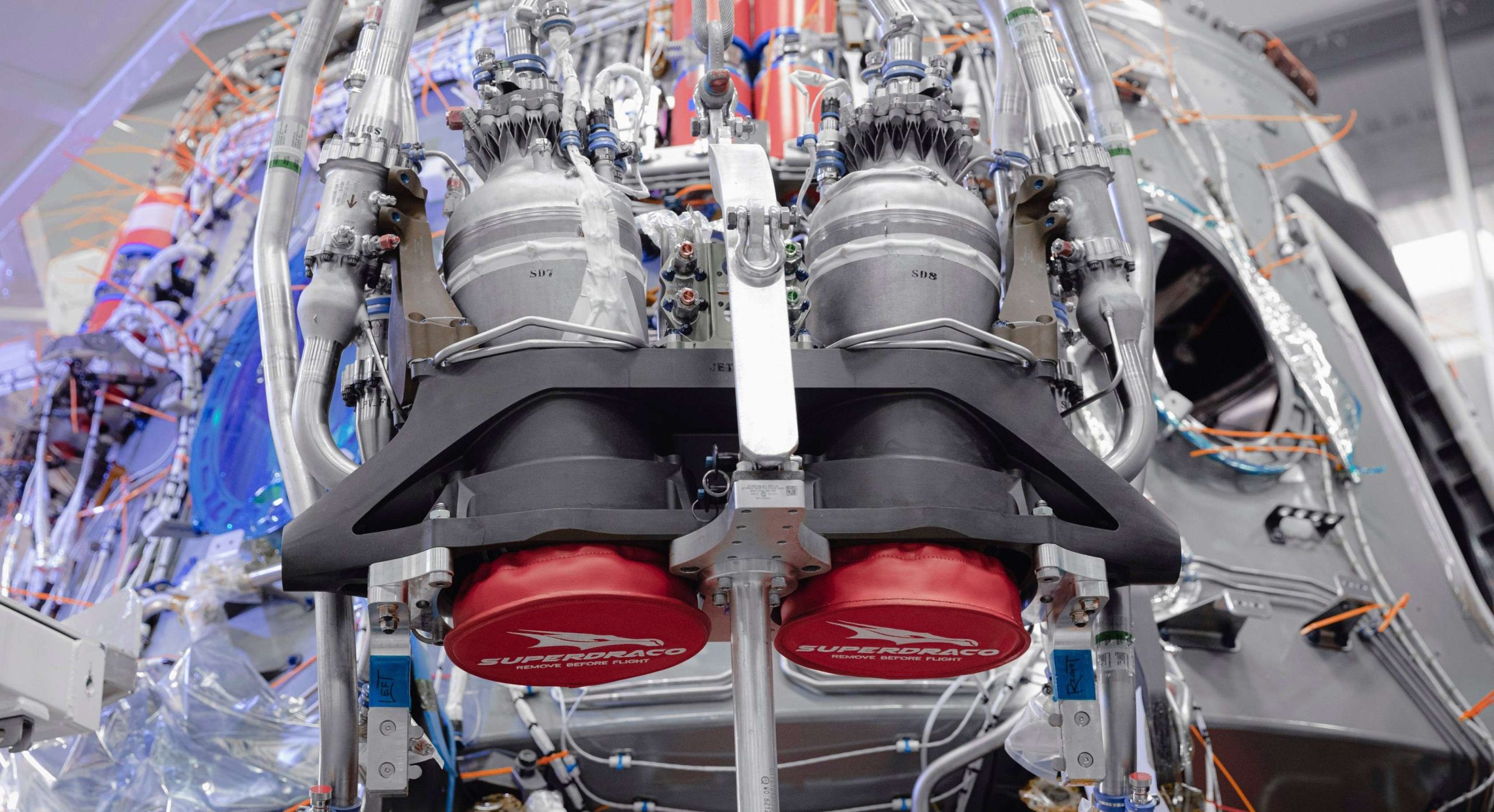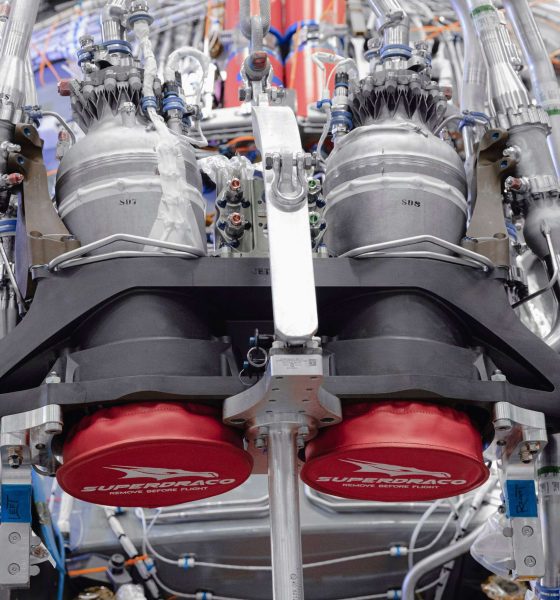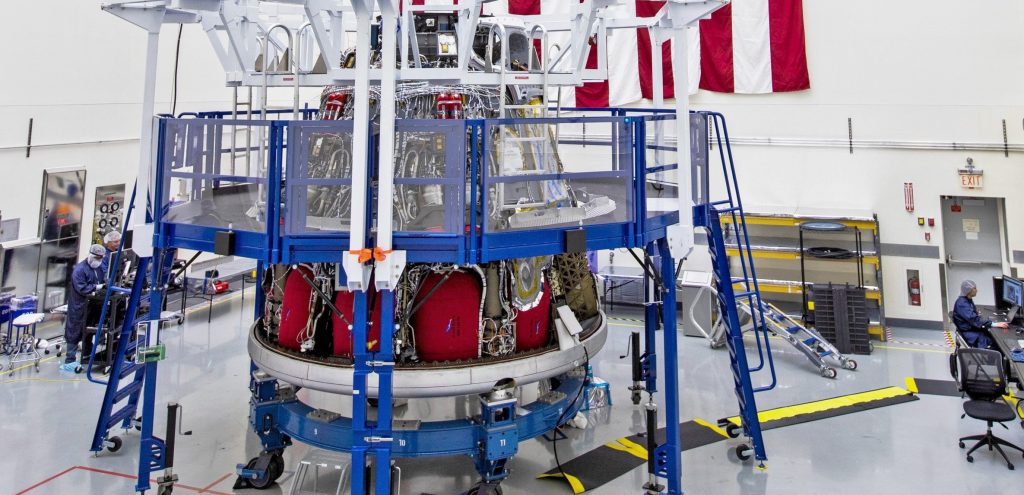

News
SpaceX’s Crew Dragon astronaut launch debut a step closer after SuperDraco milestone
Photos published by SpaceX reveal that the company has begun to outfit its first astronaut-capable Crew Dragon spacecraft with its eight SuperDraco abort engines, a major milestone along the path to launch.
On October 29th, SpaceX tweeted photos of SuperDraco installation with a caption that confirmed the engines were being installed on Crew Dragon capsule C206, currently assigned to the company’s ‘Demo-2’ astronaut launch debut. These latest photos come just five days after the company published a video of one of many SuperDraco static fire tests, perhaps an indicator that the engines pictured were performing acceptance tests just days prior.
SpaceX is exceptionally thorough when it comes to testing flight hardware before launch: for every new Falcon 9 rocket built, every single Merlin 1D and Vacuum engine is built in California, shipped to Texas for individual static fires, shipped back to CA to be installed on their respective rockets, and then shipped back to TX for an integrated static fire. They’re then shipped to their respective launch sites, where launch technicians perform yet another pre-launch static fire at the launch pad.
Although it’s not known for sure, SpaceX almost certainly takes a similar approach for its Dragon 1 and Dragon 2 spacecraft, both of which feature Draco maneuvering thrusters, while the latter also requires more powerful SuperDraco engines for its launch abort system. More likely than not, all of those (Super)Dracos are tested in McGregor after being assembled in Hawthorne and then shipped back to Hawthorne for installation on Dragon. Due to their reliance on toxic propellant and oxidizer, however, it’s far more challenging to test-fire integrated Crew or Cargo Dragons, although those tests are done once and a while for especially critical milestones.

In fact, capsule C205 recently arrived in Cape Canaveral alongside its flight-proven Falcon 9 rocket to prepare for Crew Dragon’s critical In-Flight Abort (IFA) test, in which the spacecraft will attempt to escape from a supersonic Falcon 9. Prior to launch, SpaceX plans to static fire Crew Dragon C205’s Draco and SuperDraco thrusters, essentially a repeat of the fated April 20th test that destroyed Crew Dragon capsule C201. If that test goes as planned, the spacecraft will be inspected and finally mated atop Falcon 9, while success will also likely mean that the hardware now being installed on Crew Dragon C206 is equally ready for launch.
In the unlikely event that more issues arise, SpaceX will likely have to uninstall C206’s engines, propellant tanks, and plumbing. If everything works as intended, however, C206’s preemptive hardware installation should mean that the spacecraft will be ready to support SpaceX’s astronaut launch debut much sooner.
At present, Crew Dragon’s IFA static fire is expected no earlier than November 6th, while the abort test itself is now scheduled to launch no earlier than December 2019. Demo-2, Crew Dragon’s NASA astronaut launch debut, is scheduled to launch no earlier than Q1 2020, while SpaceX CEO Elon Musk says that the spacecraft and its Falcon 9 rocket should arrive at Pad 39A and be ready for launch as early as November 2019.
Check out Teslarati’s Marketplace! We offer Tesla accessories, including for the Tesla Cybertruck and Tesla Model 3.

Elon Musk
Elon Musk’s X will start using a Tesla-like software update strategy
The initiative seems designed to accelerate updates to the social media platform, while maintaining maximum transparency.

Elon Musk’s social media platform X will adopt a Tesla-esque approach to software updates for its algorithm.
The initiative seems designed to accelerate updates to the social media platform, while maintaining maximum transparency.
X’s updates to its updates
As per Musk in a post on X, the social media company will be making a new algorithm to determine what organic and advertising posts are recommended to users. These updates would then be repeated every four weeks.
“We will make the new 𝕏 algorithm, including all code used to determine what organic and advertising posts are recommended to users, open source in 7 days. This will be repeated every 4 weeks, with comprehensive developer notes, to help you understand what changed,” Musk wrote in his post.
The initiative somewhat mirrors Tesla’s over-the-air update model, where vehicle software is regularly refined and pushed to users with detailed release notes. This should allow users to better understand the details of X’s every update and foster a healthy feedback loop for the social media platform.
xAI and X
X, formerly Twitter, has been acquired by Elon Musk’s artificial intelligence startup, xAI last year. Since then, xAI has seen a rapid rise in valuation. Following the company’s the company’s upsized $20 billion Series E funding round, estimates now suggest that xAI is worth tens about $230 to $235 billion. That’s several times larger than Tesla when Elon Musk received his controversial 2018 CEO Performance Award.
As per xAI, the Series E funding round attracted a diverse group of investors, including Valor Equity Partners, Stepstone Group, Fidelity Management & Research Company, Qatar Investment Authority, MGX, and Baron Capital Group, among others. Strategic partners NVIDIA and Cisco Investments also continued support for building the world’s largest GPU clusters.
News
Tesla FSD Supervised wins MotorTrend’s Best Driver Assistance Award
The decision marks a notable reversal for the publication from prior years, with judges citing major real-world improvements that pushed Tesla’s latest FSD software ahead of every competing ADAS system.

Tesla’s Full Self-Driving (Supervised) system has been named the best driver-assistance technology on the market, earning top honors at the 2026 MotorTrend Best Tech Awards.
The decision marks a notable reversal for the publication from prior years, with judges citing major real-world improvements that pushed Tesla’s latest FSD software ahead of every competing ADAS system. And it wasn’t even close.
MotorTrend reverses course
MotorTrend awarded Tesla FSD (Supervised) its 2026 Best Tech Driver Assistance title after extensive testing of the latest v14 software. The publication acknowledged that it had previously criticized earlier versions of FSD for erratic behavior and near-miss incidents, ultimately favoring rivals such as GM’s Super Cruise in earlier evaluations.
According to MotorTrend, the newest iteration of FSD resolved many of those shortcomings. Testers said v14 showed far smoother behavior in complex urban scenarios, including unprotected left turns, traffic circles, emergency vehicles, and dense city streets. While the system still requires constant driver supervision, judges concluded that no other advanced driver-assistance system currently matches its breadth of capability.
Unlike rival systems that rely on combinations of cameras, radar, lidar, and mapped highways, Tesla’s FSD operates using a camera-only approach and is capable of driving on city streets, rural roads, and freeways. MotorTrend stated that pure utility, the ability to handle nearly all road types, ultimately separated FSD from competitors like Ford BlueCruise, GM Super Cruise, and BMW’s Highway Assistant.
High cost and high capability
MotorTrend also addressed FSD’s pricing, which remains significantly higher than rival systems. Tesla currently charges $8,000 for a one-time purchase or $99 per month for a subscription, compared with far lower upfront and subscription costs from other automakers. The publication noted that the premium is justified given FSD’s unmatched scope and continuous software evolution.
Safety remained a central focus of the evaluation. While testers reported collision-free operation over thousands of miles, they noted ongoing concerns around FSD’s configurable driving modes, including options that allow aggressive driving and speeds beyond posted limits. MotorTrend emphasized that, like all Level 2 systems, FSD still depends on a fully attentive human driver at all times.
Despite those caveats, the publication concluded that Tesla’s rapid software progress fundamentally reshaped the competitive landscape. For drivers seeking the most capable hands-on driver-assistance system available today, MotorTrend concluded Tesla FSD (Supervised) now stands alone at the top.
News
Elon Musk’s Grokipedia surges to 5.6M articles, almost 79% of English Wikipedia
The explosive growth marks a major milestone for the AI-powered online encyclopedia, which was launched by Elon Musk’s xAI just months ago.

Elon Musk’s Grokipedia has grown to an impressive 5,615,201 articles as of today, closing in on 79% of the English Wikipedia’s current total of 7,119,376 articles.
The explosive growth marks a major milestone for the AI-powered online encyclopedia, which was launched by Elon Musk’s xAI just months ago. Needless to say, it would only be a matter of time before Grokipedia exceeds English Wikipedia in sheer volume.
Grokipedia’s rapid growth
xAI’s vision for Grokipedia emphasizes neutrality, while Grok’s reasoning capabilities allow for fast drafting and fact-checking. When Elon Musk announced the initiative in late September 2025, he noted that Grokipedia would be an improvement to Wikipedia because it would be designed to avoid bias.
At the time, Musk noted that Grokipedia “is a necessary step towards the xAI goal of understanding the Universe.”
Grokipedia was launched in late October, and while xAI was careful to list it only as Version 0.1 at the time, the online encyclopedia immediately earned praise. Wikipedia co-founder Larry Sanger highlighted the project’s innovative approach, noting how it leverages AI to fill knowledge gaps and enable rapid updates. Netizens also observed how Grokipedia tends to present articles in a more objective manner compared to Wikipedia, which is edited by humans.
Elon Musk’s ambitious plans
With 5,615,201 total articles, Grokipedia has now grown to almost 79% of English Wikipedia’s article base. This is incredibly quick, though Grokipedia remains text-only for now. xAI, for its part, has now updated the online encyclopedia’s iteration to v0.2.
Elon Musk has shared bold ideas for Grokipedia, including sending a record of the entire knowledge base to space as part of xAI’s mission to preserve and expand human understanding. At some point, Musk stated that Grokipedia will be renamed to Encyclopedia Galactica, and it will be sent to the cosmos.
“When Grokipedia is good enough (long way to go), we will change the name to Encyclopedia Galactica. It will be an open source distillation of all knowledge, including audio, images and video. Join xAI to help build the sci-fi version of the Library of Alexandria!” Musk wrote, adding in a later post that “Copies will be etched in stone and sent to the Moon, Mars and beyond. This time, it will not be lost.”








